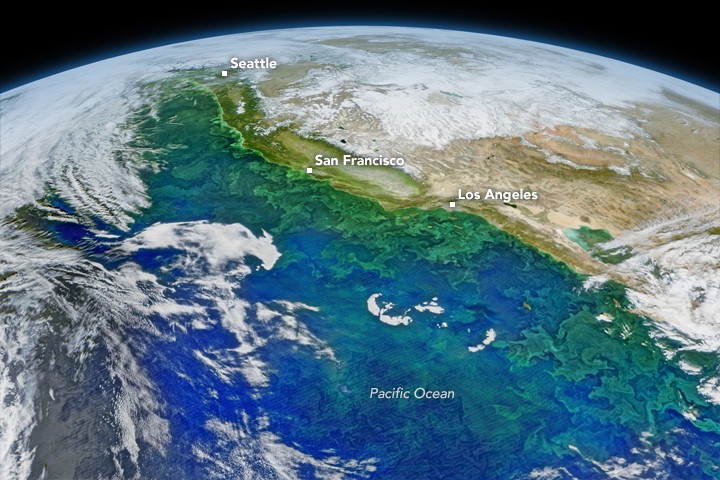The Pacific Ocean off the western coast of North America is home to one of the world’s most productive marine ecosystems, largely thanks to the California Current. This southward flow of cool water plays a vital role in the region’s climate and marine life. But just How Fast Does The California Current Move, and what factors influence its speed?
To understand the speed of the California Current, it’s important to first grasp what it is. Scientists classify it as an eastern boundary current, a type of current found on the eastern edges of major ocean basins. These currents, influenced by the Earth’s rotation (the Coriolis effect), generally move water towards the equator. The California Current originates off the coast of British Columbia and flows south, all the way down to Baja California. This movement, combined with winds blowing offshore, drives a process called upwelling. Upwelling brings nutrient-rich, cold water from the ocean depths to the surface, fueling the growth of phytoplankton, the base of the marine food web.
 Swirling phytoplankton blooms along the California coast, captured by satellite.
Swirling phytoplankton blooms along the California coast, captured by satellite.
So, getting back to speed: the California Current is not a fast-moving ocean river. In fact, it’s characterized as a slow-moving current. While speeds can vary depending on location, depth, and seasonal winds, the average speed of the California Current is generally quite slow, often less than 1 mile per hour (mph). Some sources indicate average speeds ranging from approximately 0.1 to 1 meter per second, which translates to about 0.2 to 2 mph. However, typically, speeds are on the lower end of this range, often under that 1 mph mark.
Several factors influence the speed of the California Current. Wind patterns play a significant role; stronger winds can sometimes lead to slightly faster surface currents. The current’s meandering nature also affects local speeds, with eddies and swirls creating areas of faster and slower flow. Furthermore, the current is broad and diffuse, rather than a narrow jet, which contributes to its generally slow and distributed movement.
Despite its slow speed, the California Current’s impact is enormous. The cool, nutrient-rich waters it carries are the foundation of a highly productive ecosystem. Phytoplankton thrive in these conditions, supporting vast populations of zooplankton, fish, marine mammals like whales and seals, and seabirds. This vibrant food web sustains significant fisheries and makes the region a biodiversity hotspot.
However, this delicate balance is facing threats. Climate change and events like El Niño can disrupt the California Current system. Research suggests that global warming might intensify upwelling, potentially altering the water chemistry and impacting marine species. El Niño events, characterized by warmer ocean temperatures, can reduce upwelling, leading to less nutrient availability and stressing the entire ecosystem. These changes can have significant consequences for the speed, temperature, and overall health of the California Current and the rich marine life it supports.
In conclusion, while not a rapid current, the California Current is a powerful force shaping the ecosystem off the western North American coast. Its typical speed is slow, often less than 1 mph, but its influence on climate, upwelling, and marine productivity is immense, making it a crucial area of study in a changing world.
